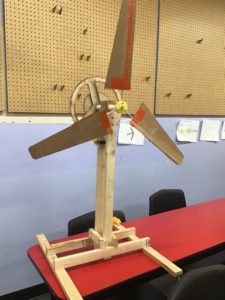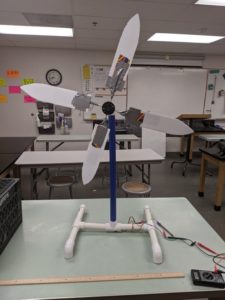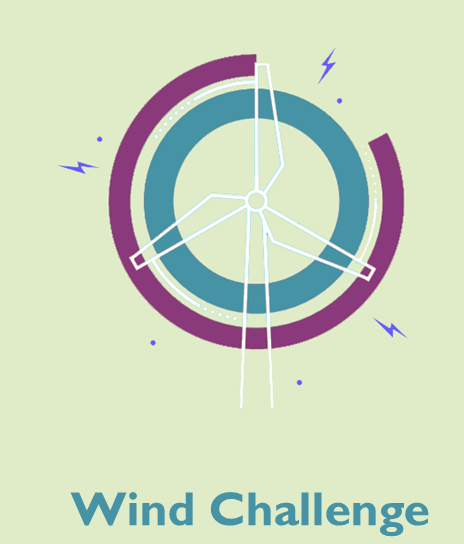
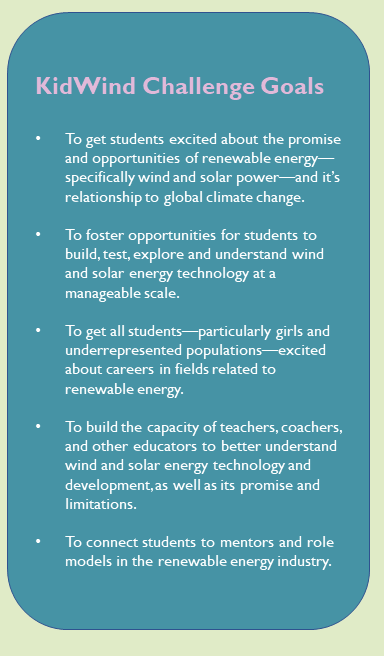
Getting started
☐ Find a mentor and form a team
☐ Register your team here so we know you are planning to participate
☐ Send your mentor to a virtual workshop! (Optional, but very helpful!)
☐ Explore student turbines on the Online Challenge
☐ Learn about the basic parts of a wind turbine
☐ Build your wind turbine (learn more about gear in the next section!)
☐ Test and improve your turbine, over and over
☐ Bring your turbine to the Regional KidWind Challenge
☐ You did it, congratulations!
Willow Bend has a limited supply of basic gear to help get you started. We aim to supply all teams with the KidWind Basic Turbine Building Parts (based on teams of 4-5 students), which includes a generator, hub, and some dowels. In addition, each mentor is eligible for a KidWind testing kit (this includes a turbine stand, multimeter, pair of alligator clips and resistors).
In addition, KidWind has a number of kits and materials to get you exploring, but you can use gears from anywhere to participate in a KidWind Challenge as long as you are not violating the rules.

KidWind Generator
For the KidWind Challenge, we use the KidWind Wind Turbine Generator with Wires. This is the primary generator for wind turbine experiments because it runs smoothly and provides high power output at a relatively low RPM. This is the competition generator used in KidWind Challenge events.

Blades
Wind turbine blades and their orientation to the wind are very important parts of a wind turbine design. You could study this for years and still not be an expert! The only rule we have about blades is you cannot use pre-made airfoils and your blades should be made of safe materials. We see students using all kinds of materials to make blades: cardboard, balsa wood, 3D printers...you name it! We do not supply blade materials, as this is a huge part of the engineering process.

Tower
You can make a tower for your wind turbine out of practically anything. Check out these plans to make simple PVC tower turbine or get a simple KidWind tower from Vernier. Don’t limit yourself to just these towers! In fact, if you want to win you will need to adapt! We have seen some great towers made from wood, cardboard tubes, Tinker-Toys, plastic, etc. Try experimenting with different designs! Which type of tower seems strongest? Why do you think certain wind turbines use the type of towers they use? The only rule for making your tower is that it must have a firm base to sit securely on the ground, and it must be tall enough so that your blades will not hit the ground. If your turbine has a gear or pulley system, you will need to have some kind of platform or housing on top of your tower to hold the gear/pulley box.
Students can build their own towers, or we can supply one tower per classroom (students can attach their nacelle to the tower when testing).

Gearboxes or Belt Drives (optional but will greatly increase the power output)
While building a gearbox or a belt drive can be challenging, it can also greatly increase the power output of your wind turbine. Belt drives or gears can give your wind turbine a mechanical advantage and multiply the mechanical force of the turning blades. Your team can use KidWind gearboxes and parts through Vernier, you can find parts from other vendors, or your can construct your own gearboxes or belt drives. The only rule is that we must approve it as safe!

Fans or Wind Tunnels
You can use any fan to test your turbine. At our workshops and while we are preparing and tinkering, we like to use simple box fans. At KidWind Challenge events, or when we come to test at your school, we will use set-up our wind tunnel. Unlike a box fan, our tunnels suck the air through the shroud which leads to cleaner less turbulent winds.
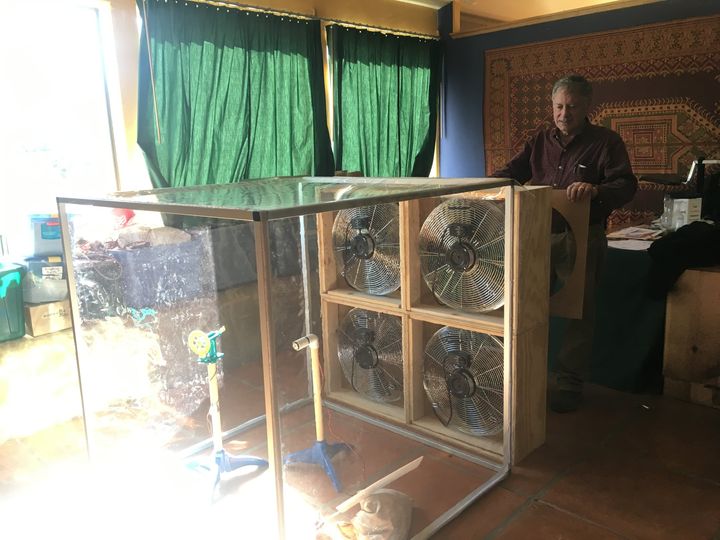
Willow Bend's Wind Tunnel

Power Measurement
You will need to learn how to measure power output from your turbine. You can use a simple multimeter or data logging equipment. The key is to make sure that your turbine is attached to a load whenever you are collecting data. What’s a load? Time to do some homework! When we come to your school, we will use Vernier's Energy Sensor (which has a built-in 30 ohm load) and the software, Logger Pro, to collect data from your turbine.
Measuring Voltage Using a Multimeter
We supply teachers with the resistors here or you could check out the KidWind basic load board on the Vernier website.
All of this information is adapted from the 2020-2021 KidWind Challenge Rulebook. We encourage you to go through the rulebook to learn more! Pages 16-17 go over some of the official rules.
An example of a very simple wind turbine (no gear box)
Sample projects from 2021
